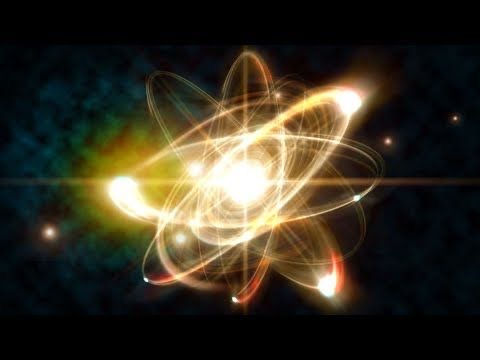The universe is expanding faster than it should be
- pnegatina

- Dec 24, 2021
- 4 min read
The latest measurements with the Hubble Space Telescope suggest the universe is expanding faster than scientists' models predict—a hint that some unknown ingredient could be at work in the cosmos.
Evidence of this conundrum has been accumulating for years, causing some researchers to call it a looming crisis in cosmology.
Now a group of researchers using the Hubble Space Telescope has compiled a massive new dataset, and they’ve found a-million-to-one odds that the discrepancy is a statistical fluke. In other words, it’s looking even more likely that there’s some fundamental ingredient of the cosmos—or some unexpected effect of the known ingredients—that astronomers have yet to pin down.
The conundrum is known as the Hubble tension, after astronomer Edwin Hubble. In 1929 he observed that the farther a galaxy is from us, the faster it recedes—an observation that helped pave the way toward our current notion of the universe starting with the big bang and expanding ever since.
Researchers have tried to measure the universe’s current rate of expansion in two primary ways: by measuring distances to nearby stars, and by mapping a faint glow dating back to the infant universe. These dual approaches provide a way to test our understanding of the universe across more than 13 billion years of cosmic history. The research has also uncovered some key cosmic ingredients, such as “dark energy,” the mysterious force thought to be driving the universe’s accelerating expansion.
According to the team’s work, the tension between their new analysis and results from measurements of the early cosmos has reached five sigma, the statistical threshold used in particle physics to confirm the existence of new particles.
One way of getting the Hubble constant relies on the cosmic microwave background (CMB), a faint glow that formed when the universe was just 380,000 years old. Telescopes such as the European Space Agency’s Planck observatory have measured the CMB, providing a detailed snapshot of how matter and energy were distributed in the early universe, as well as the physics that governed them.

This image from the Hubble Space Telescope features the spiral galaxy Markarian 1337, which is roughly 120 million light-years away from Earth. In 2006, astronomers saw a certain kind of supernova explode in this galaxy, providing researchers with some of the data needed to determine the universe’s current rate of expansion.
IMAGE BY ESA/HUBBLE & NASA, A. RIESS ET AL.
Other astronomers still see room for possible errors in the data, which means it’s still possible the Hubble tension is just an artifact.
The new studies’ cosmic distance ladder, assembled by Riess’s research group SH0ES, starts with measurements of the distances between us and certain kinds of stars called Cepheid variables. Cepheids are valuable because in essence they act as strobe lights of known wattage: They brighten and dim regularly, and the brighter the Cepheids, the more slowly they pulsate. Using this principle, astronomers can estimate the intrinsic brightnesses of even more distant Cepheids based on their pulsation rates and ultimately calculate the stars’ distances from us.
To extend the ladder even farther, astronomers have added rungs based on stellar explosions called type 1a supernovae. By studying galaxies that host both Cepheids and type 1a supernovae, astronomers can work out the relationship between the supernovae’s brightnesses and their distances. And because type 1a supernovae are much brighter than Cepheids, they can be seen at much greater distances, letting astronomers extend their measurements to galaxies deeper in the cosmos.
In recent years, though, the University of Chicago’s Wendy Freedman has been working on an estimate that doesn’t rely on pulsing stars. Instead, she uses a specific group of red giant stars, which also act like light bulbs of known wattage. Building off of these alternate “standard candles,” or objects with known intrinsic brightnesses, Freedman’s independent estimate of the Hubble constant is 69.8 kilometers per second per megaparsec—in the middle of the other two measurements.
Despite the team’s careful work, Freedman says that undiscovered errors could still be affecting the analysis, perhaps creating an illusory tension. She adds that some sources of uncertainty are also unavoidable. For one, there are only three galaxies close enough to the Milky Way whose distances we can measure directly, and the base of the cosmic distance ladder rests on this trio.
The Pantheon+ and SH0ES teams have taken a long look at Freedman and others’ results, and some of their various analyses examine what happens if Freedman’s preferred stars are added to the cosmic distance ladder, along with Cepheids and type 1a supernovae. According to their work, including these extra stars slightly lowers the estimate for the Hubble constant—but it does not eliminate the tension.
One of the leading theoretical contenders, called early dark energy, proposes that about 50,000 years after the big bang, there was a brief flare-up of dark energy. In principle, a short blip of extra dark energy could alter the expansion of the early universe enough to resolve the Hubble tension without messing too much with the standard model of cosmology.
But in the process, cosmologists’ estimates for the age of the universe would fall from the current 13.8 billion years to about 13 billion years.
“There’s a lot of questions about why you have to introduce this one new thing that just shows up and disappears–that feels a little funny,” says Mike Boylan-Kolchin, an astrophysicist at the University of Texas at Austin. “But we’re in a place where, if these things are really that discrepant, maybe we have to start looking in the funny corners of the universe.”
For now, there’s no slam-dunk evidence for early dark energy, though some hints have reared their heads. In September the Atacama Cosmology Telescope, a facility in Chile that measures the cosmic microwave background, claimed that a model including early dark energy fits its data better than the standard cosmological model does. The Planck telescope’s data disagree, so future observations will be required to get to the bottom of the mystery.
SOURCES


















Comments